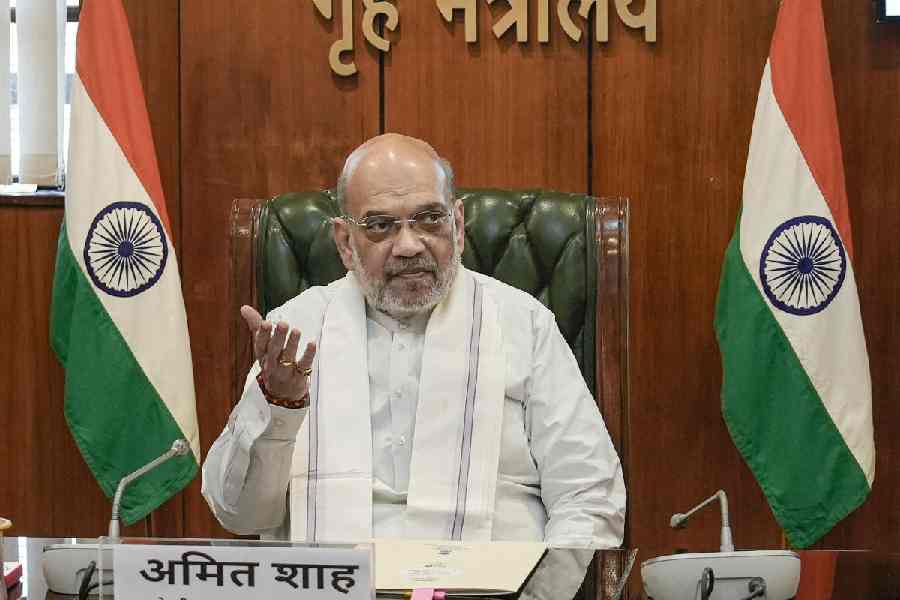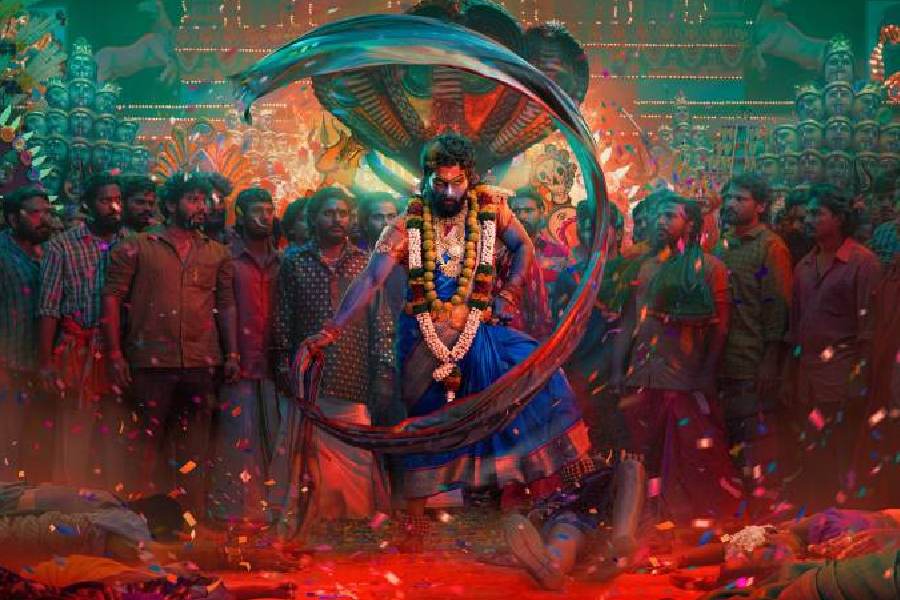Over 5.67 crore people in Bengal's 22 districts will vote on Saturday to elect rural bodies that will govern their day-to-day lives for the next five years.
The voters will choose representatives of 63,229 seats in 3,317 gram panchayats, 9,730 seats in 341 panchayat samitis, and 928 seats in 20 zilla parishads. The polling will also gauge the mood of rural Bengal — though not homogeneous across the state as there are distinct differences in north and south Bengal — ahead of next year's Lok Sabha polls.
The Telegraph takes a closer look at some of the key factors of the 2023 panchayat polls.
The minority concern: Which way the bulk of the crucial minority voters — around a third of the Bengal electorate — sway would be something all major political parties would watch out for. The Trinamul Congress hopes to retain its support base that it took to unprecedented highs in the 2021 Assembly elections, especially in the key districts with decisive minority populations – North Dinajpur, Malda, Murshidabad, Birbhum, and South 24-Parganas.
The Congress is banking on a swing of minority votes in its favour, away from Trinamul, to regain some of its lost ground in former bastions such as North Dinajpur, Malda, and Murshidabad.
Political observers think that if Trinamul does lose control of any of the zilla parishads, it could be Murshidabad, to the Congress as there is likely to be a tough contest.
Since Trinamul’s shock defeat in the recent Sagardighi by-polls – although it managed to engineer the lone Congress MLA Bayron Biswas’s defection eventually – had triggered alarm in the ruling dispensation, as the constituency with over 65 per cent minority electors was deemed microcosmic of the minority support scene. But eventually, Mamata and the senior leadership inferred that it was a one-off case of upset.
Nonetheless, Mamata appointed Itahar MLA Mosaraf Hossain as the chief of the party’s minority cell, replacing the incumbent Haji Nurul Islam.
The chief minister also assumed charge of the minority affairs and madarsa education department from cabinet colleague Md. Ghulam Rabbani, and entrusted minister of state Tajmul Hossain with additional charge as the junior minister of the department.
Within hours of the Congress’s Karnataka triumph, the Trinamul leadership verbally alerted its leadership of Murshidabad, Malda, and North Dinajpur to guard against the possibility of resurgence of the Grand Old Party there.
“According to our internal estimates, elsewhere in the state, outside Bhangar (with the apparently formidable rise of Nawsad Siddique’s ISF there) minority electors are unlikely to turn away from us, knowing that would directly end up strengthening the BJP,” said a Trinamul MP.
The BJP’s support: In 2018, the BJP had managed — despite the 34 per cent uncontested seats — to win 5,779 gram panchayat seats, 769 panchayat samiti seats, and 22 zilla parishad seats. The following year, it had risen to an unprecedented 18 Lok Sabha victories in the state.
Despite being trounced in the Assembly elections of 2021, it recorded a vote share of nearly 38 per cent (which was a rise of around 28 per cent in five years). The BJP had fared better in rural areas — especially in the northern and western districts — than in urban or semi-urban centres.
With claims of 35-odd Lok Sabha seats from the state next year, and promises of premature felling of the Trinamul-led state government thereafter, the BJP needs to have something to show for itself in the panchayat polls, at least by way of vote share.
Its main concern, from results of local or by-elections, over the past couple of years has been signs of a Left-Congress resurgence, which would throw the BJP out of contention for power in the elusive state.
“If the elections were to be untainted, uncompromised, we would have had excellent results. There is little hope of local elections being clean in the Trinamul regime. But there will be heroic resistance,” said BJP state chief spokesperson Samik Bhattacharya.
The Left-Congress combine: The two political entities, given their precarious position of having to break bread with Mamata in the pan-India alliance of major non-BJP forces taking shape while fighting her tooth and nail in Bengal, are desperate to make a mark in Bengal this time.
The combine wants to replace the BJP in the state’s principal Opposition space, to work towards its eventual goal of ousting Trinamul from power. For that, the results — at least the vote share — of these panchayat elections would be an important indicator of whether there is any progress in the right direction since the Assembly elections of 2021, when they were both reduced to zero seats in the House and barely 10 per cent of the vote share.
CPM central committee member Sujan Chakraborty claimed that free, fair, and peaceful elections would have ensured an alarming dent to both Trinamul and the BJP.
“Even without that ideal scenario, we will do substantially well,” he said.
The poll panel and central forces: Since taking charge as the state election commissioner on June 7, former state chief secretary Rajiva Sinha’s tenure at the helm of the poll panel has been turbulent and controversial, with the Opposition repeatedly accusing him of bias towards the ruling dispensation.
Under him, the commission was dragged into a bundle of court cases by the Opposition, to which the Mamata Banerjee government was a party too. The commission and the state government were almost always seen on the same page, before the judiciary.
While the commission and Sinha faced substantial rebuke from the judiciary on a number of occasions, the commission under him had only one significant order against it, that of deployment of central forces for the conduct of the elections.
The role of the retired IAS officer of the 1986 batch, and that of the commission under him, could be pivotal on Saturday.
Despite committing to have 822 companies of central forces sent, as of late on Friday evening, the Centre was falling short in actual deployment by around 50 companies.
Not only will a deficit – if any, in the end – be crucial but also their utilisation upon deployment.
Although 820-odd companies of central forces were deployed in 2013, under a Supreme Court ruling in favour of then state election commissioner Mira Pande, they turned out to be ineffective as they were left largely unutilised during polling.
The likes of the BJP’s leader of the Opposition Suvendu Adhikari and the Congress’s state unit chief Adhir Ranjan Chowdhury have been repeatedly voicing their apprehensions over the role of the commission under Sinha and the misutilisation of central forces on polling day.
The role of the poll panel will be tested on Saturday.











